John Carr Of York on:
[Wikipedia]
[Google]
[Amazon]
John Carr (1723–1807) was a prolific English
 Carr's own favourite work was the Crescent at
Carr's own favourite work was the Crescent at
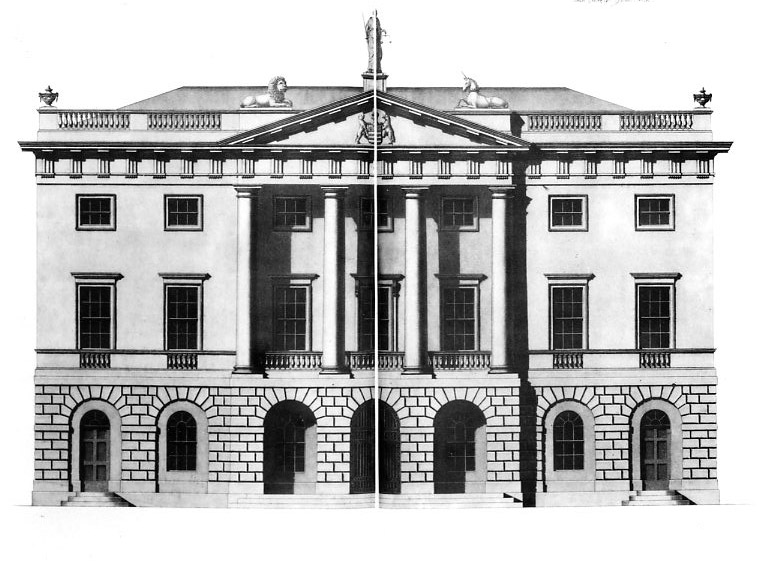



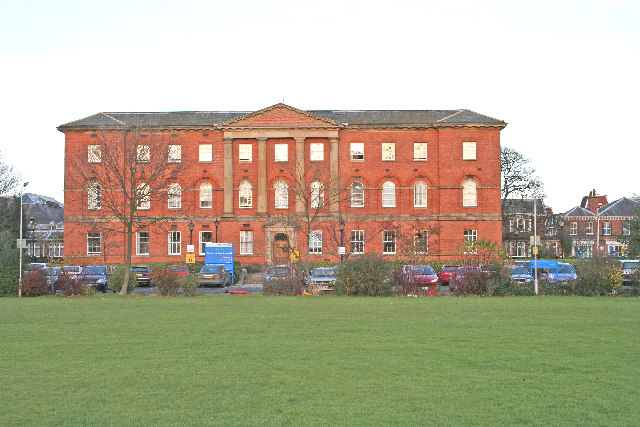 ''(dem = demolished)'' ''in chronological order, county given if not Yorkshire''
*York The Pikeing Well-House New Walk 1752–56
*York Grandstand Knavesmire Racecourse 1755–56 dem
*
''(dem = demolished)'' ''in chronological order, county given if not Yorkshire''
*York The Pikeing Well-House New Walk 1752–56
*York Grandstand Knavesmire Racecourse 1755–56 dem
*
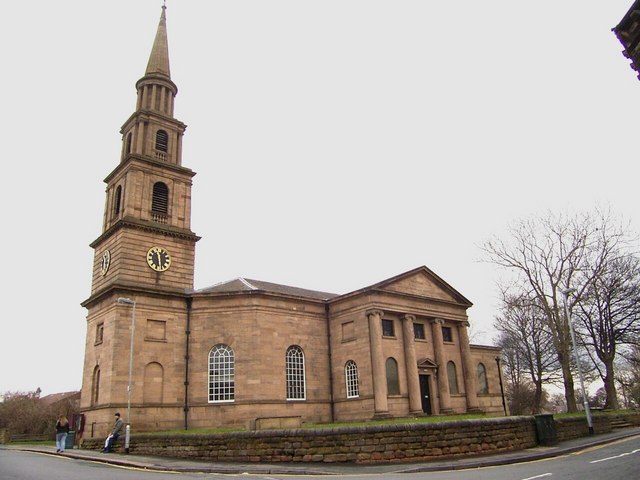
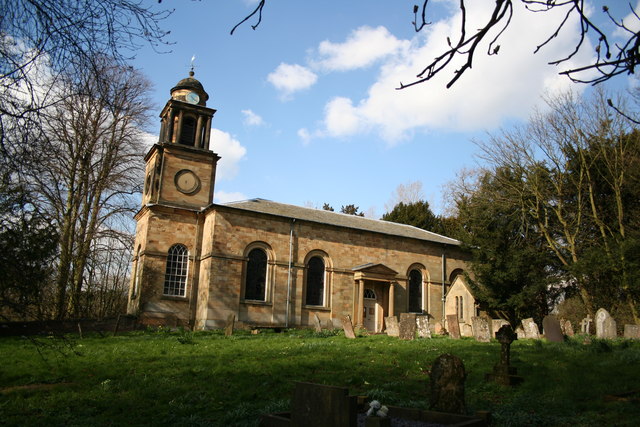 *Ravenfield, 1756;
*Kirkleatham, Payment for design, 1759;
* Dewsbury Minster, Partly rebuilt 1765–7;
*Bierley, 1766; attributed:
*Boynton, largely rebuilt 1768–70;
*
*Ravenfield, 1756;
*Kirkleatham, Payment for design, 1759;
* Dewsbury Minster, Partly rebuilt 1765–7;
*Bierley, 1766; attributed:
*Boynton, largely rebuilt 1768–70;
*
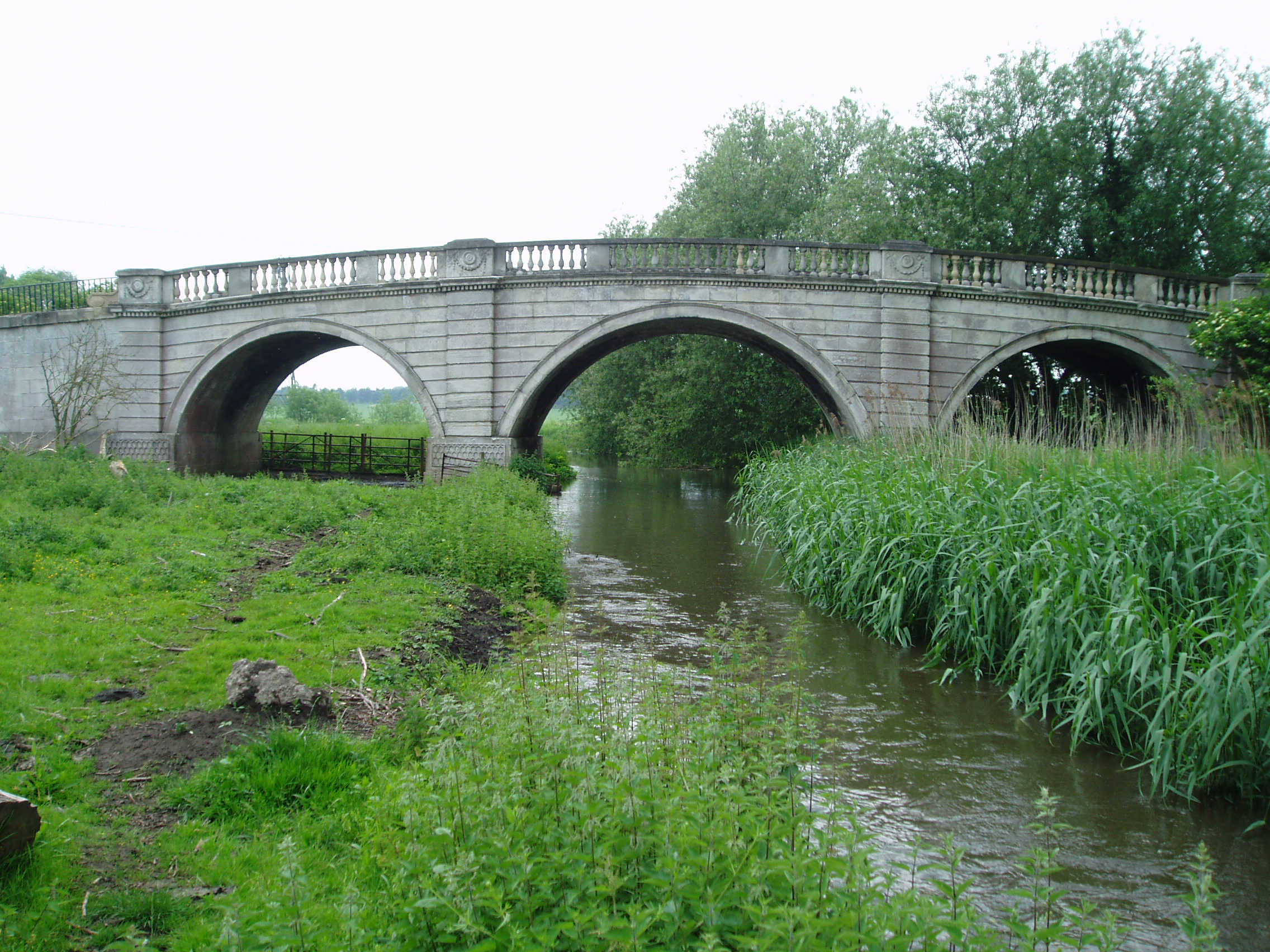 *Blyth, Notts., dated 1776, (now public);
*Denton Park, c. 1770;
*Harewood Park, Yorks. c. 1771;
*Norton Place Park, Lincs., c. 1776;
*Unexecuted bridge designs for Wentworth Woodhouse, Yorks.
*Blyth, Notts., dated 1776, (now public);
*Denton Park, c. 1770;
*Harewood Park, Yorks. c. 1771;
*Norton Place Park, Lincs., c. 1776;
*Unexecuted bridge designs for Wentworth Woodhouse, Yorks.
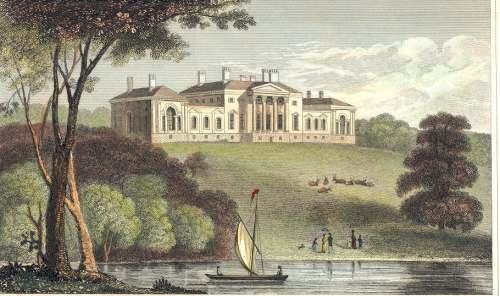

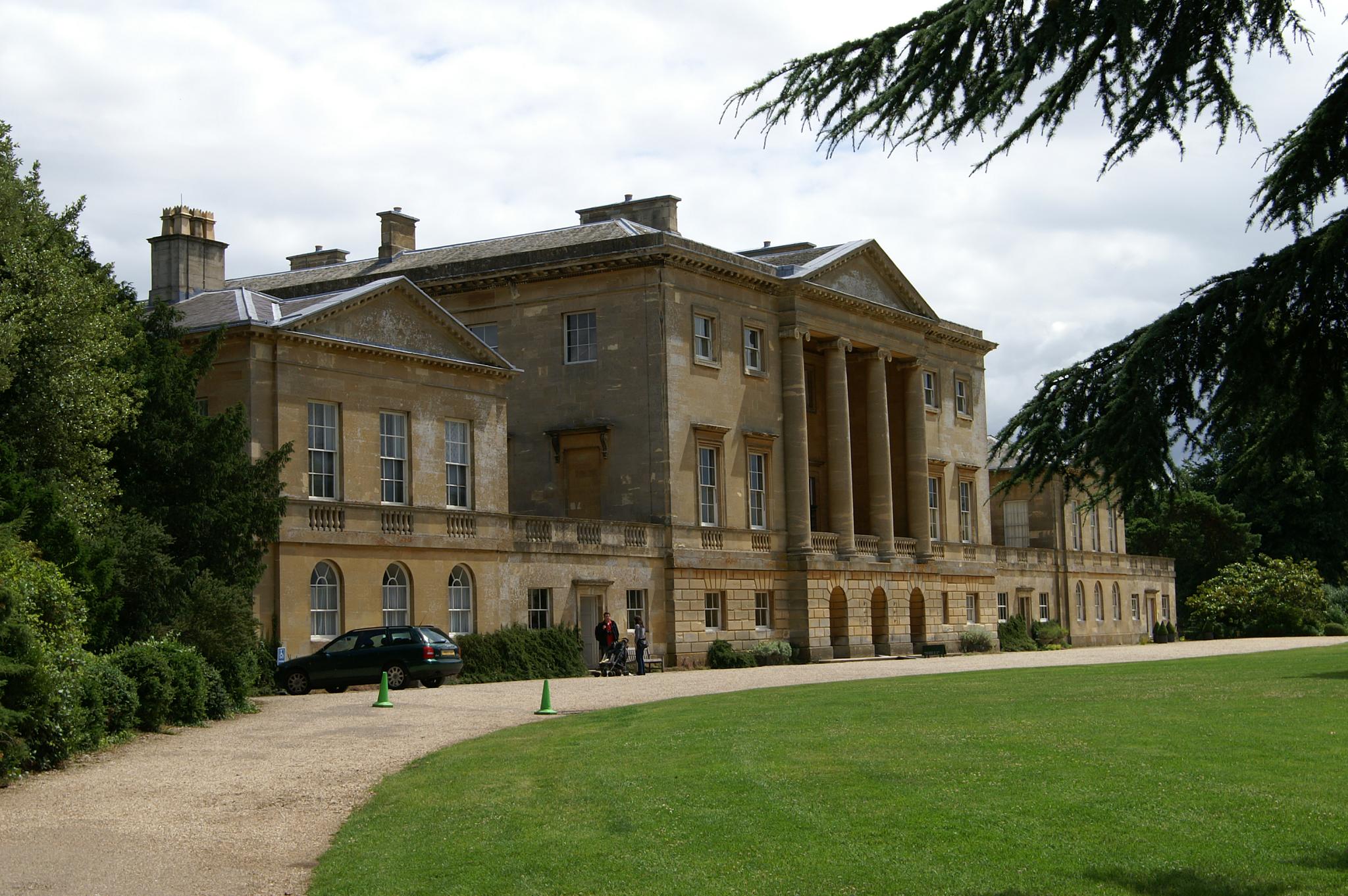


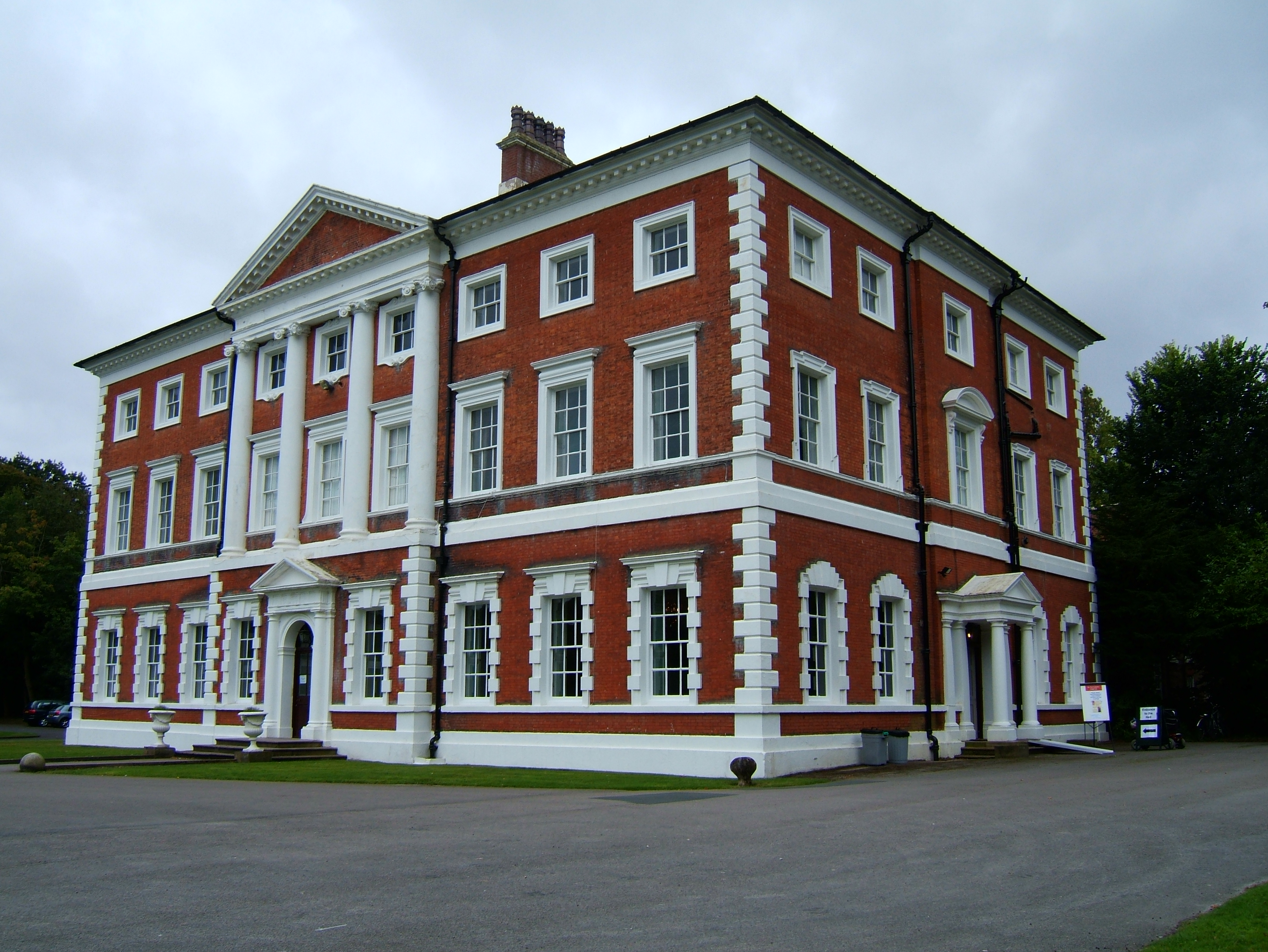

 (The following are in Yorkshire, unless otherwise stated)
*The New Lodge, New Lodge, Barnsley (c.1760) – built as a dwelling for John Carr himself
*Kirby Hall, Ouseburn, 1747-c.55, dem.
*Huthwaite Hall, Thurgoland, 1748;
*Askham Hall, Askham Richard, Yorks., c. 1750 dem;
*Thorp Arch Hall, 1750–4;
*
(The following are in Yorkshire, unless otherwise stated)
*The New Lodge, New Lodge, Barnsley (c.1760) – built as a dwelling for John Carr himself
*Kirby Hall, Ouseburn, 1747-c.55, dem.
*Huthwaite Hall, Thurgoland, 1748;
*Askham Hall, Askham Richard, Yorks., c. 1750 dem;
*Thorp Arch Hall, 1750–4;
*
Photographs of Colwick Hall, Nottinghamshire from Nottingham21John Carr page on History of York website
{{DEFAULTSORT:Carr, John People from Horbury 1723 births 1807 deaths Lord Mayors of York 18th-century English architects Architects from Yorkshire
architect
An architect is a person who plans, designs and oversees the construction of buildings. To practice architecture means to provide services in connection with the design of buildings and the space within the site surrounding the buildings that h ...
, best known for Buxton Crescent
Buxton Crescent is a Grade-I-listed building in the town of Buxton, Derbyshire, England. It owes much to the Royal Crescent in Bath, but has been described by the Royal Institution of British Architects as "more richly decorated and altogether m ...
in Derbyshire
Derbyshire ( ) is a ceremonial county in the East Midlands, England. It includes much of the Peak District National Park, the southern end of the Pennine range of hills and part of the National Forest. It borders Greater Manchester to the nor ...
and Harewood House
Harewood House ( , ) is a country house in Harewood, West Yorkshire, England. Designed by architects John Carr and Robert Adam, it was built, between 1759 and 1771, for Edwin Lascelles, 1st Baron Harewood, a wealthy West Indian plantation ...
in West Yorkshire
West Yorkshire is a metropolitan and ceremonial county in the Yorkshire and Humber Region of England. It is an inland and upland county having eastward-draining valleys while taking in the moors of the Pennines. West Yorkshire came into exi ...
. Much of his work was in the Palladian
Palladian architecture is a European architectural style derived from the work of the Venetian architect Andrea Palladio (1508–1580). What is today recognised as Palladian architecture evolved from his concepts of symmetry, perspective and ...
style. In his day he was considered to be the leading architect in the north of England.
Life
He was born inHorbury
Horbury is a town in the City of Wakefield in West Yorkshire, England. Historically in the West Riding of Yorkshire, it is situated north of the River Calder about three miles (5 km) south west of Wakefield and two miles (3 km) to the ...
, near Wakefield
Wakefield is a cathedral city in West Yorkshire, England located on the River Calder. The city had a population of 99,251 in the 2011 census.https://www.nomisweb.co.uk/census/2011/ks101ew Census 2011 table KS101EW Usual resident population, ...
, England, the eldest of nine children and the son of a master mason, under whom he trained. He started an independent career in 1748 and continued until shortly before his death. John Carr was Lord Mayor of York
The Lord Mayor of York is the chairman of City of York Council, first citizen and civic head of York. The appointment is made by the council each year in May, at the same time appointing a sheriff, the city's other civic head. York's lord mayor ...
in 1770 and 1785. Towards the end of his life Carr purchased an estate at Askham Richard
Askham Richard is a village and civil parish in the unitary authority of City of York in the north of England, south-west of York, close to Copmanthorpe, Bilbrough and Askham Bryan. The population of the civil parish at the 2011 census was ...
, near York, to which he retired. On 22 February 1807 he died at Askham Hall. He was buried in St Peter and St Leonard's Church, Horbury
St Peter and St Leonard's Church, Horbury is in Horbury, West Yorkshire, England. It is an active Church of England parish church and part of the Wakefield deanery in the archdeaconry of Pontefract, diocese of Wakefield and commonly known as St P ...
, which he had designed and paid for.
Career
Carr decided to remain inYorkshire
Yorkshire ( ; abbreviated Yorks), formally known as the County of York, is a historic county in northern England and by far the largest in the United Kingdom. Because of its large area in comparison with other English counties, functions have ...
rather than move to London because he calculated that there was ample patronage and the wealth to sustain it. No job was too small. His largest work, only partially finished, was the Hospital de Santo António in Oporto
Porto or Oporto () is the second-largest city in Portugal, the capital of the Porto District, and one of the Iberian Peninsula's major urban areas. Porto city proper, which is the entire municipality of Porto, is small compared to its metropo ...
, Portugal. In order to maximise his income, he kept his staff to the minimum. His earliest assistant was William Lindley (architect 1739–1818), who from 1774 developed an independent practice. He was followed by the elder Peter Atkinson (1735-1805) and possibly his son Peter the younger (1780-1843). Carr's nephew William Carr also assisted his uncle in his latter years. These architectural assistants had 'boys' to help them in turn. Carr rarely delegated matters that others would regard as too trivial, and in consequence Carr had to travel immense distances mostly on horse back. However the frequency of such visits brought him into regular contact with his many clients to mutual advantage.
Buxton
Buxton is a spa town in the Borough of High Peak, Derbyshire, England. It is England's highest market town, sited at some above sea level.Derbyshire
Derbyshire ( ) is a ceremonial county in the East Midlands, England. It includes much of the Peak District National Park, the southern end of the Pennine range of hills and part of the National Forest. It borders Greater Manchester to the nor ...
, an early example of multifunctional architecture. As well as hotels and lodging houses, it contained Assembly Rooms
In Great Britain and Ireland, especially in the 18th century Britain, 18th and 19th centuries, assembly rooms were gathering places for members of the higher social classes open to members of both sexes. At that time most entertaining was done ...
, shops, a post office and a public promenade all under one roof. On a smaller scale, the same is true of his Newark Town Hall.
Other public buildings included hospitals (e.g., Lincoln
Lincoln most commonly refers to:
* Abraham Lincoln (1809–1865), the sixteenth president of the United States
* Lincoln, England, cathedral city and county town of Lincolnshire, England
* Lincoln, Nebraska, the capital of Nebraska, U.S.
* Lincol ...
and York
York is a cathedral city with Roman origins, sited at the confluence of the rivers Ouse and Foss in North Yorkshire, England. It is the historic county town of Yorkshire. The city has many historic buildings and other structures, such as a ...
), racecourse
A race track (racetrack, racing track or racing circuit) is a facility built for racing of vehicles, athletes, or animals (e.g. horse racing or greyhound racing). A race track also may feature grandstands or concourses. Race tracks are also use ...
grandstands (e.g. York
York is a cathedral city with Roman origins, sited at the confluence of the rivers Ouse and Foss in North Yorkshire, England. It is the historic county town of Yorkshire. The city has many historic buildings and other structures, such as a ...
, Doncaster
Doncaster (, ) is a city in South Yorkshire, England. Named after the River Don, it is the administrative centre of the larger City of Doncaster. It is the second largest settlement in South Yorkshire after Sheffield. Doncaster is situated in ...
and Nottingham
Nottingham ( , locally ) is a city and unitary authority area in Nottinghamshire, East Midlands, England. It is located north-west of London, south-east of Sheffield and north-east of Birmingham. Nottingham has links to the legend of Robi ...
), (all now demolished), and prisons at Wakefield and Northallerton
Northallerton ( ) is a market town and civil parish in the Hambleton District of North Yorkshire, England. It lies in the Vale of Mowbray and at the northern end of the Vale of York. It had a population of 16,832 in the 2011 census, an increa ...
. He designed new churches as well as repairing old ones. The former were all privately financed, the latter were financed by the existing parishes. His single span roof construction allowed him to build the new churches without the traditional subdivision into nave and aisles.
He served as bridgemaster for both the North
North is one of the four compass points or cardinal directions. It is the opposite of south and is perpendicular to east and west. ''North'' is a noun, adjective, or adverb indicating direction or geography.
Etymology
The word ''north ...
and West
West or Occident is one of the four cardinal directions or points of the compass. It is the opposite direction from east and is the direction in which the Sun sets on the Earth.
Etymology
The word "west" is a Germanic word passed into some ...
Ridings of Yorkshire, leaving a legacy of countless bridges the majority of which still stand today.The Industrial Architecture of Yorkshire by Jane Hatcher, p. 69, The more than 60 bridges built or altered by Carr still serve the backbone of North Yorkshire's road transport network. Carr was Lord Mayor of York
The Lord Mayor of York is the chairman of City of York Council, first citizen and civic head of York. The appointment is made by the council each year in May, at the same time appointing a sheriff, the city's other civic head. York's lord mayor ...
in 1770 and 1785.
His commissions for country houses included model villages and farms, stable blocks, a variety of gate lodges and gateways, garden temples and other ornamental buildings. Notable among them his works for the estates of Harewood and Wentworth Woodhouse.
He took particular care with their planning and construction to maximise value for money for both the immediate patron and for the buildings' future long-term maintenance. He used traditional materials and methods of construction where these had proved sound, but adopted new methods and materials where these could be shown to have an advantage. His training as a stonemason naturally led him to build in that material. In particular he enjoyed using 'great' stones as at Tabley House. He liked well proportioned rooms which were satisfactory living spaces with or without decorative enrichment. In his view the latter could be provided later if money permitted. As a result, most of his buildings were completed and because of the soundness of construction most survive.
Among the buildings accessible in whole or part to the public today are Buxton Crescent, Newark Town Hall, virtually all his bridges, Harewood House
Harewood House ( , ) is a country house in Harewood, West Yorkshire, England. Designed by architects John Carr and Robert Adam, it was built, between 1759 and 1771, for Edwin Lascelles, 1st Baron Harewood, a wealthy West Indian plantation ...
, Tabley House
Tabley House is an English country house in Tabley Inferior (Nether Tabley), some to the west of the town of Knutsford, Cheshire. The house is recorded in the National Heritage List for England as a designated Grade I listed building. I ...
, Clifton House (a museum in Rotherham), Lytham Hall
Lytham Hall is an 18th-century Georgian country house in Lytham, Lancashire, from the centre of the town, in of wooded parkland. It is recorded in the National Heritage List for England as a designated Grade I listed building, the only one ...
and Fairfax House at 27 Castlegate York, now the headquarters of York Civic Trust
York Civic Trust is a membership organisation and a registered charity based in York, UK. Its primary function is to "preserve, protect and advise on the historic fabric of York". It is based in Fairfax House.
Foundation
York Civic Trust was fo ...
.
Influences
During his long career there were several major changes in architectural style. His early work is a mixture of thePalladian
Palladian architecture is a European architectural style derived from the work of the Venetian architect Andrea Palladio (1508–1580). What is today recognised as Palladian architecture evolved from his concepts of symmetry, perspective and ...
and the Rococo
Rococo (, also ), less commonly Roccoco or Late Baroque, is an exceptionally ornamental and theatrical style of architecture, art and decoration which combines asymmetry, scrolling curves, gilding, white and pastel colours, sculpted moulding, ...
. He then sought a purer Antique Roman style with occasional French influences before adapting the currently fashionable style associated with Robert Adam
Robert Adam (3 July 17283 March 1792) was a British neoclassical architect, interior designer and furniture designer. He was the son of William Adam (1689–1748), Scotland's foremost architect of the time, and trained under him. With his ...
. At the end of his life he returned to the bolder Palladian style of his youth but with detail that looked forward to 19th-century usage.
Carr's work was influenced by the books of Sebastiano Serlio
Sebastiano Serlio (6 September 1475 – c. 1554) was an Italian Mannerist architect, who was part of the Italian team building the Palace of Fontainebleau. Serlio helped canonize the classical orders of architecture in his influential trea ...
and Andrea Palladio
Andrea Palladio ( ; ; 30 November 1508 – 19 August 1580) was an Italian Renaissance architect active in the Venetian Republic. Palladio, influenced by Roman and Greek architecture, primarily Vitruvius, is widely considered to be one of ...
. He subscribed to many architectural pattern books, including those of his friend George Richardson, and also contemporary publications by Robert Morris and William Chambers.
List of works
Public buildings




 ''(dem = demolished)'' ''in chronological order, county given if not Yorkshire''
*York The Pikeing Well-House New Walk 1752–56
*York Grandstand Knavesmire Racecourse 1755–56 dem
*
''(dem = demolished)'' ''in chronological order, county given if not Yorkshire''
*York The Pikeing Well-House New Walk 1752–56
*York Grandstand Knavesmire Racecourse 1755–56 dem
*Beverley
Beverley is a market and minster town and a civil parish in the East Riding of Yorkshire, England, of which it is the county town. The town centre is located south-east of York's centre and north-west of City of Hull.
The town is known fo ...
Assembly Rooms, 1761–63 dem
*Wakefield, The House of Correction, 1766–70 dem
*Leeds, The General Infirmary, 1768–71 dem
*Oporto
Porto or Oporto () is the second-largest city in Portugal, the capital of the Porto District, and one of the Iberian Peninsula's major urban areas. Porto city proper, which is the entire municipality of Porto, is small compared to its metropo ...
, Portugal, The Hospital de Santo António 1769-c. 1843
* Newark Town Hall, Newark, Notts., Town Hall, Assembly Rooms and Market Hall, 1773–76
*York, Assize Courts, now York Crown Court 1773–77
* York County Lunatic Asylum, 1774–77
* Lincoln County Hospital, Lincs., 1776
*Doncaster, Racecourse Grandstand, 1777–81 dem
*Nottingham
Nottingham ( , locally ) is a city and unitary authority area in Nottinghamshire, East Midlands, England. It is located north-west of London, south-east of Sheffield and north-east of Birmingham. Nottingham has links to the legend of Robi ...
, racecourse grandstand, 1777 dem
*Nottingham, Notts., Assembly Rooms
In Great Britain and Ireland, especially in the 18th century Britain, 18th and 19th centuries, assembly rooms were gathering places for members of the higher social classes open to members of both sexes. At that time most entertaining was done ...
, 1778 dem
* Kelso, Roxburghs., design for Racecourse Grandstand, 1778 (built in 1822)
*Buxton, Derbys., The Assembly Rooms in the Crescent
A crescent shape (, ) is a symbol or emblem used to represent the lunar phase in the first quarter (the "sickle moon"), or by extension a symbol representing the Moon itself.
In Hinduism, Lord Shiva is often shown wearing a crescent moon on his ...
1779–90
*York, The Female Prison, 1780–83
*Northallerton, Court House, 1784–88 dem
*Northallerton, House of Correction
The house of correction was a type of establishment built after the passing of the Elizabethan Poor Law (1601), places where those who were "unwilling to work", including vagrants and beggars, were set to work. The building of houses of correctio ...
1784–88
*Chesterfield, Derbys., Town Hall, 1787–88 dem
* Lismore, County Waterford in Ireland, design for court building, today a heritage centre 1799
Churches

 *Ravenfield, 1756;
*Kirkleatham, Payment for design, 1759;
* Dewsbury Minster, Partly rebuilt 1765–7;
*Bierley, 1766; attributed:
*Boynton, largely rebuilt 1768–70;
*
*Ravenfield, 1756;
*Kirkleatham, Payment for design, 1759;
* Dewsbury Minster, Partly rebuilt 1765–7;
*Bierley, 1766; attributed:
*Boynton, largely rebuilt 1768–70;
*York Minster
The Cathedral and Metropolitical Church of Saint Peter in York, commonly known as York Minster, is the cathedral of York, North Yorkshire, England, and is one of the largest of its kind in Northern Europe. The minster is the seat of the Arch ...
, survey and repairs 1770-3 and 1794–97; Joseph Halfpenny was clerk of works on this project
*Sheffield, St. Peter, alterations 1773–5;
*Rokeby, completed church 1777–8;
* Denton, 1776; attributed
* Holy Rood Church, Ossington, Notts., 1782–3;
*St Peter and St Leonard's Church, Horbury
St Peter and St Leonard's Church, Horbury is in Horbury, West Yorkshire, England. It is an active Church of England parish church and part of the Wakefield deanery in the archdeaconry of Pontefract, diocese of Wakefield and commonly known as St P ...
, 1790–4.
Bridges
North and East Ridings of Yorkshire
*Aysgarth (R.Ure), 1788; *Ayton (R.Derwent), 1775; * Bainbridge (Yore Bridge,River Ure
The River Ure in North Yorkshire, England is approximately long from its source to the point where it becomes the River Ouse. It is the principal river of Wensleydale, which is the only major dale now named after a village rather than its r ...
, (1793) and Bain Bridge, River Bain
The River Bain is a river in Lincolnshire, England, and a tributary of the River Witham.
The Bain rises in the Lincolnshire Wolds at Ludford,J. N. Clarke, (1990), ''The Horncastle and Tattershall Canal'', Oakwood Press, a village on The Vik ...
, (widened 1785))
*Birdforth (Birdforth Beck) 1798dem;
*Bow Bridge, (R.Rye), 1789;
*Catterick (R.Swale) 1792;
*Crambeck 1785;
*Croft (R. Tees), 1795;
*Danby Wiske, 1782;
*Downholme, (R.Swale), 1773;
*East Row,Sandsend, nr. Whitby
Whitby is a seaside town, port and civil parish in the Scarborough borough of North Yorkshire, England. Situated on the east coast of Yorkshire at the mouth of the River Esk, Whitby has a maritime, mineral and tourist heritage. Its East Clif ...
, 1777;
*Ellerbeck, nr. Osmotherley, 1790;
*Greta, nr.Rokeby, 1773;
*Grinton (R.Swale), 1797;
*Hawnby (R.Rye), 1800;
*Howsham Bridge not executed
*Kilvington (Spital Beck), 1774dem;
*Kirkham Bridge not executed
*Low Bourn (R.Burn), nr. Masham 1775;
*Morton on Swale (R.Swale), 1800–3;
*South Otterington (R.Wiske) 1776;
*Reeth (Arkle Beck), 1772–3;
*Riccall, nr. Helmsley, 1803;
* Richmond (R.Swale), 1789;
*Rutherford (R.Greta), 1773;
*Skeeby nr. Richmond, 1782;
*Skipton on Swale, 1783;
*Strensall, (R.Foss), 1798,
*Thirkleby, 1799;
*Thirsk Mill, Millgate, (over Cod Beck) 1789;
*York, Yearsley Bridge (R.Foss) 1794–5;
West Riding
*Carlton Ferry, nr. Snaith, (R.Aire)1774; *Coniston Cold, (R.Aire), 1763; *Ferrybridge
Ferrybridge is a village in West Yorkshire, England. Ferrybridge lies at a historically important crossing of the River Aire which borders the North Yorkshire village of Brotherton. It is linked to other communities by the A1, which follows t ...
, (R.Aire), 1797–1804) ;
*Marle Bridge (R.Dearne), nr. Darfield, 1766;
*Selby, 1795 in part for the wooden bridge at.
Private bridges
 *Blyth, Notts., dated 1776, (now public);
*Denton Park, c. 1770;
*Harewood Park, Yorks. c. 1771;
*Norton Place Park, Lincs., c. 1776;
*Unexecuted bridge designs for Wentworth Woodhouse, Yorks.
*Blyth, Notts., dated 1776, (now public);
*Denton Park, c. 1770;
*Harewood Park, Yorks. c. 1771;
*Norton Place Park, Lincs., c. 1776;
*Unexecuted bridge designs for Wentworth Woodhouse, Yorks.
Domestic architecture






 (The following are in Yorkshire, unless otherwise stated)
*The New Lodge, New Lodge, Barnsley (c.1760) – built as a dwelling for John Carr himself
*Kirby Hall, Ouseburn, 1747-c.55, dem.
*Huthwaite Hall, Thurgoland, 1748;
*Askham Hall, Askham Richard, Yorks., c. 1750 dem;
*Thorp Arch Hall, 1750–4;
*
(The following are in Yorkshire, unless otherwise stated)
*The New Lodge, New Lodge, Barnsley (c.1760) – built as a dwelling for John Carr himself
*Kirby Hall, Ouseburn, 1747-c.55, dem.
*Huthwaite Hall, Thurgoland, 1748;
*Askham Hall, Askham Richard, Yorks., c. 1750 dem;
*Thorp Arch Hall, 1750–4;
*Gledhow Hall
Gledhow Hall is an English country house in Gledhow, Leeds, West Yorkshire. A house, built in the 17th-century by John Thwaites, was remodelled for a new owner by the Yorkshire architect John Carr. It is a Grade II* listed building and has bee ...
, Gledhow, Roundhay, Leeds c. 1764 for J. Dixon;
*Arncliffe Hall, Ingleby Arncliffe, c. 1750–4;
*York, No. 47, Bootham, 1752;
*Campsmount, Campsall near Doncaster, 1752-5 dem;
*Leeds, town house for J. Dixon 1753; Northallerton, 84 High Street, c.1754.
* Heath Hall, near Wakefield, 1754–80;
*York, Petergate, house for J. Mitchell, 1755 dem;
*York, Fairfax House, 27 Castlegate, circa 1755–62; Gilling Castle
*Howsham Mill
Howsham Mill is a Grade II listed 18th century watermill located on the River Derwent in North Yorkshire, England.
History
Howsham Mill dates back to and is attributed to John Carr of York. It was built in the Gothic Revival style both a ...
, near Malton, c. 1755;
*Plompton Hall, near Knaresborough, c. 1755–62;
*York, Garforth House, No. 54 Micklegate, c. 1755–7;
*Lytham Hall
Lytham Hall is an 18th-century Georgian country house in Lytham, Lancashire, from the centre of the town, in of wooded parkland. It is recorded in the National Heritage List for England as a designated Grade I listed building, the only one ...
, Lancs., 1757–64;
*Goldsborough Hall
Goldsborough Hall is a Jacobean stately home located in the village of Goldsborough, North Yorkshire, England. It is a member of the Historic Houses Association. The house itself is a Grade II* listed building. The Hall was built for Sir Ri ...
, remodelling, c. 1750s;
*Newby Hall
Newby Hall is a country house beside the River Ure in the parish of Skelton-on-Ure in North Yorkshire, England. It is 3 miles south-east of Ripon and 6 miles south of Topcliffe Castle, by which the manor of Newby was originally held. A Grade ...
, remodelling, c. 1758–60;
*Everingham Hall1758-64;
*Kirklees Hall, alterations, 1759–60;
*Harewood House
Harewood House ( , ) is a country house in Harewood, West Yorkshire, England. Designed by architects John Carr and Robert Adam, it was built, between 1759 and 1771, for Edwin Lascelles, 1st Baron Harewood, a wealthy West Indian plantation ...
, 1755–71; (except the decoration of the principal rooms)
*Harewood village and other estate buildings;
*Kirkland Hall, near Garstang, Lancs. 1760 ; attributed:
*Ravenfield Hall, near Rotherham, alterations, 1760–70 dem;
*Tabley House
Tabley House is an English country house in Tabley Inferior (Nether Tabley), some to the west of the town of Knutsford, Cheshire. The house is recorded in the National Heritage List for England as a designated Grade I listed building. I ...
, Cheshire, c. 1760–7;
* Hornby Castle, c. 1760–70 partly dem;
*Wentworth Woodhouse
Wentworth Woodhouse is a Grade I listed country house in the village of Wentworth, in the Metropolitan Borough of Rotherham in South Yorkshire, England. It is currently owned by the Wentworth Woodhouse Preservation Trust. The building has ...
, c. 1760- 1804,completed the house, and numerous important estate buildings.
*Clints Hall nr. Richmond, dem,
* Castlegate House, Castlegate, York 1762–3;
*Campsall Hall, alterations, 1762-4 dem;
*Stapleton Park, c. 1762-4 dem;
* Grove Hall, near Retford, Nottinghamshire remodelled c. 1762 dem;
*Constable Burton Hall
Constable Burton Hall is a grade I-listed Georgian mansion of dressed stone in an extensive and well wooded park in the village of Constable Burton in North Yorkshire, and is privately owned by the Wyvill family. The house is a two-storey ashla ...
, c. 1762–8;
*Escrick Park, remodelled, 1763–5;
*White Windows, Sowerby Bridge, 1763–8;
*Welbeck Abbey
Welbeck Abbey in the Dukeries in North Nottinghamshire was the site of a monastery belonging to the Premonstratensian order in England and after the Dissolution of the Monasteries, a country house residence of the Dukes of Portland. It is o ...
, Nottinghamshire 1763, 1774–7;
*Cannon Hall
Cannon Hall is a country house museum located between the villages of Cawthorne and High Hoyland some 5 miles (8 km) west of Barnsley, South Yorkshire, England. Originally the home of the Spencer and later the Spencer-Stanhope family, it ...
near Barnsley, 1764, 1778 onwards;
*Goldsborough Hall
Goldsborough Hall is a Jacobean stately home located in the village of Goldsborough, North Yorkshire, England. It is a member of the Historic Houses Association. The house itself is a Grade II* listed building. The Hall was built for Sir Ri ...
nr. Knaresborough, internal alterations, 1764–5;
*Swinton Park, nr. Masham, alterations 1764–7;
*Kirkleatham Hall, remodelling, 1764-7dem;
*Swarland Hall, near Felton, Northumberland, 1765 dem; attributed
*Courteenhall, Northamptonshire, stables, after 1765;
*York, Skeldergate
Skeldergate is a street in the city centre of York, in England. The street is now primarily residential, with many of its warehouse buildings having been converted into apartments.
History
During the Roman Eboracum period, the area in which Ske ...
, his own house, 1765-9 dem;
*Aske Hall
Aske Hall is a Georgian country house, with parkland attributed to Capability Brown, north of Richmond, North Yorkshire, England. It contains an impressive collection of 18th-century furniture, paintings and porcelain, and in its grounds a Joh ...
, c. 1765–9;
*Boynton Hall near Bridlington, c.1765–80;
*Fangfoss Hall, East Yorkshire c.1766-;
* Halifax, Somerset House and warehouse, c. 1766;
*Towneley Hall, Lancashire, interiors, 1766–7,
*Pye Nest near Halifax, 1767dem;
*Thoresby Hall
Thoresby Hall is a grade I listed 19th-century country house in Budby, Nottinghamshire, some 2 miles (4 km) north of Ollerton. It is one of four neighbouring country houses and estates in the Dukeries in north Nottinghamshire all occupied b ...
, Nottinghamshire
Nottinghamshire (; abbreviated Notts.) is a landlocked county in the East Midlands region of England, bordering South Yorkshire to the north-west, Lincolnshire to the east, Leicestershire to the south, and Derbyshire to the west. The trad ...
. 1767–71 dem;
* Castle William, Budby Nottinghamshire
Nottinghamshire (; abbreviated Notts.) is a landlocked county in the East Midlands region of England, bordering South Yorkshire to the north-west, Lincolnshire to the east, Leicestershire to the south, and Derbyshire to the west. The trad ...
, Thoresby Hall Estate c 1767
* Auckland Castle, Bishop Auckland, County Durham, alterations c.1767–72; attributed
*Raby Castle
Raby Castle () is a medieval castle located near Staindrop in County Durham, England, among of deer park. It was built by John Neville, 3rd Baron Neville de Raby, between approximately 1367 and 1390. Cecily Neville, the mother of the Kings Ed ...
, County Durham, remodelled, 1768–88;
*Leeds, Bridge End, house for Mr. Green, before 1769;
*Kilnwick Hall, remodelled 1769–72, 1781 dem;
*The Shay, nr. Halifax, c. 1770dem;
*Byram Hall and farm, nr.Ferrybridge, remodelled c. 1770, largely dem;
* Gledstone Hall and stables nr. Skipton, c. 1770 house dem; attributed:
*Aston Rectory, near Rotherham, c. 1770;
*Somerby Hall, Somerby, Lincolnshire
Lincolnshire (abbreviated Lincs.) is a Counties of England, county in the East Midlands of England, with a long coastline on the North Sea to the east. It borders Norfolk to the south-east, Cambridgeshire to the south, Rutland to the south-we ...
monument ashlar doric column topped by an urn for Edward Weston
Edward Henry Weston (March 24, 1886 – January 1, 1958) was a 20th-century American photographer. He has been called "one of the most innovative and influential American photographers..." and "one of the masters of 20th century photography." ...
*Sedbury Park, near Richmond, alterations c.1770 house dem;
* Denton Hall, Wharfedale, 1769–81;
*Chesters, near Hexham, Northumberland, 1771;
*Aston Hall
Aston Hall is a Grade I listed Jacobean house in Aston, Birmingham, England, designed by John Thorpe and built between 1618 and 1635. It is a leading example of the Jacobean prodigy house.
In 1864, the house was bought by Birmingham Corpor ...
near Rotherham, 1760s;
*Thirsk Hall, additions, 1771–3;
*London, Burlington House, Piccadilly, internal alterations, c. 1771-5dem;
*Ormesby Hall near Middlesbrough, stables and entrance lodge, c. 1772; attributed:
*Redbourne Hall, Lincolnshire, alterations, 1773;
*Blyth Hall, Nottinghamshire, 1773-6dem;
*Leventhorpe Hall, near Leeds,1774;
*Castle Howard
Castle Howard is a stately home in North Yorkshire, England, within the civil parish of Henderskelfe, located north of York. It is a private residence and has been the home of the Carlisle branch of the Howard family for more than 300 years ...
, alterations and stables, 1774–82;
*Panton Hall, near Wragby, Lincolnshire, remodelling, 1775dem;
*Ribston Hall, near Knaresborough, alterations and stables, c. 1775; attributed
*Norton Place, Bishop Norton, Lincolnshire 1776;
*Billing Hall, Great Billing, Northamptonshire, 1776 dem;
* Basildon Park, Berkshire, 1776;
* Colwick Hall, Nottinghamshire, remodelled 1776;
* Middleton Lodge, Middleton Tyas
Middleton Tyas is a village and List of civil parishes in North Yorkshire, civil parish in the Richmondshire district of North Yorkshire, England. It is located near Scotch Corner.
History
The name Middleton is of Old English language, Anglo-S ...
, 1777–80;
*Sledmere
Sledmere is a village in the East Riding of Yorkshire, England, about north-west of Driffield on the B1253 road.
The village lies in a civil parish which is also officially called "Sledmere" by the Office for National Statistics, although th ...
, Castle Farm and designs for Sledmere House
Sledmere House is a Grade I listed Georgian country house, containing Chippendale, Sheraton and French furnishings and many fine pictures, set within a park designed by Capability Brown. It is located in the village of Sledmere, between Driff ...
1778;
* Clifton Hall, Notts. alterations, 1778–97;
*Staunton in the Vale Hall, Nottinghamshire, alterations 1778 -85;
*Bolling Hall
Bolling Hall (December 25, 1767 – February 25, 1836) was a United States Representative from Georgia. He was born in Dinwiddie County, Virginia. He served in the American Revolutionary War at the age of 16. After the war, he moved to Hanc ...
, near Bradford, alterations 1779 -80;
*Thornes House, near Wakefield, designs for house, 1779-81dem;
*Langford Hall
Langford Hall is a country house in Langford, Nottinghamshire. The house is built in the neo-classical style and has many interesting architectural features. It is Grade II* listed and stands in 83 acres of parkland.
It is constructed in two st ...
, Nottinghamshire c. 1780;
*Badsworth Hall, c. 1780dem;
*New Lodge, Wakefield Road, Barnsley, c. 1780;
*Wiganthorpe Hall, near Malton, c. 1780dem;
*Buxton, Derbyshire, The Crescent, St. Ann's Well, and Great Stables. 1779–90;
*Grimston Garth, near Aldborough, 1781–6;
* Chatsworth House, Derbyshire, internal redecoration, c. 1782–4; (and for the same patron, the repair of Hardwick Hall
Hardwick Hall in Derbyshire is an architecturally significant country house from the Elizabethan era, a leading example of the Elizabethan prodigy house. Built between 1590 and 1597 for Bess of Hardwick, it was designed by the architect ...
).
*Clifton House, Rotherham,1783;
*Holker Hall
Holker Hall (pronounced Hooker by some) is a privately owned country house located about 2 km to the southwest of the village of Cartmel in the ceremonial county of Cumbria and historic county of Lancashire, England. It is "the grandest ...
, near Cartmel, Lancashire, minor works c. 1783, 1787;
* Workington Hall, Cumberland, extensive remodelling, 1783–91
*Belle Isle, Windermere
Windermere (sometimes tautologically called Windermere Lake to distinguish it from the nearby town of Windermere) is the largest natural lake in England. More than 11 miles (18 km) in length, and almost 1 mile (1.5 km) at its wides ...
, for the same patron. and minor changes to
*Cradside House Scotland.
*Sand Hutton Park, 1786dem;
*Eastwood House, Rotherham, 1786-7dem;
*Farnley Hall, near Otley, major extension, 1786–90;
*Castle William, Budby, Nottinghamshire, c. 1789;
*Durham Castle
Durham Castle is a Norman castle in the city of Durham, England, which has been occupied since 1837 by University College, Durham after its previous role as the residence of the Bishops of Durham. Designated since 1986 as a cultural World Heri ...
, remodelled gateway 1791;
* Bretton Hall, alterations, 1790s;
* Leck Hall, c.1790s
*Wood Hall, near Wetherby, c. 1795;
*Fawley Court, Buckinghamshire, lodges, 1797–9;
*Belle Vue (Claife Viewing Station) near Hawkshead, Lancashire, belvedere c. 1799;
*Coolattin Park (Malton House), Shillelagh
A shillelagh ( ; ga, sail éille or , "thonged willow") is a wooden walking stick and club or cudgel, typically made from a stout knotty blackthorn stick with a large knob at the top. It is associated with Ireland and Irish folklore.
Other ...
, County Wicklow, Ireland 1800–1808;
*"Milton Hall, near Peterborough, Northamptonshire, internal alterations c. 1803 and orangery, 1788–9;
*Upleatham Hall, alterations, date uncertain;
*Tankersley Park, temple, date uncertain;
*Obelisk
An obelisk (; from grc, ὀβελίσκος ; diminutive of ''obelos'', " spit, nail, pointed pillar") is a tall, four-sided, narrow tapering monument which ends in a pyramid-like shape or pyramidion at the top. Originally constructed by An ...
and monument: Knox's Hill, Armagh, 1782–3;
*Bramham Park
Bramham Park is a Grade I listed 18th-century country house in Bramham, between Leeds and Wetherby, in West Yorkshire, England.
The house, constructed of magnesian limestone ashlar with stone slate roofs in a classical style, is built to a li ...
, after 1773; attributed:
*Wall monument, Otley All Saints, to Francis Fawkes of Farnley Hall, 1754, signed J Carr.
*Wall monument design for Buxton family (Goodchild Collection Wakefield)
*Wood Hall Yorkshire
*Chevet Hall, Wakefield (dem) and stable block
*Hook Moor Lodges, Great North Road A1 Aberford, West Yorkshire, part of the Parlington Hall
Parlington Hall was the seat of the Gascoigne family, Aberford near Leeds in West Yorkshire, England.
The Parlington estate contains a number of features: the grade II* listed Triumphal Arch, designed by Thomas Leverton and built around the en ...
Estate;
References
Further reading
* *External links
Photographs of Colwick Hall, Nottinghamshire from Nottingham21
{{DEFAULTSORT:Carr, John People from Horbury 1723 births 1807 deaths Lord Mayors of York 18th-century English architects Architects from Yorkshire